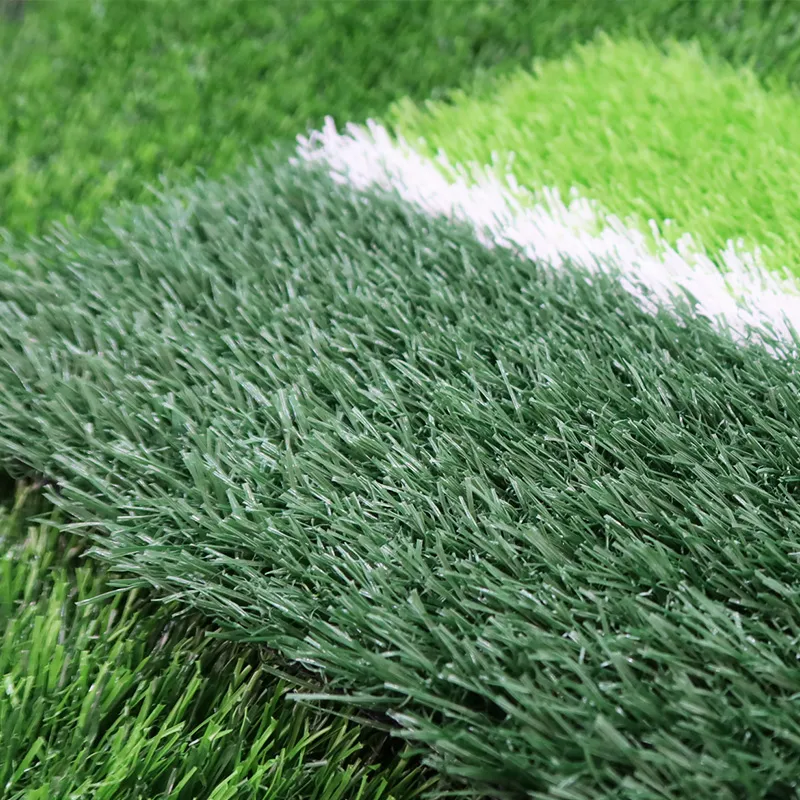
- Afrikaans
- Arabic
- Belarusian
- Bengali
- Czech
- Danish
- Dutch
- English
- Esperanto
- Estonian
- Finnish
- French
- German
- Greek
- Hindi
- Hungarian
- Icelandic
- Indonesian
- irish
- Italian
- Japanese
- kazakh
- Rwandese
- Korean
- Kyrgyz
- Lao
- Latin
- Latvian
- Malay
- Mongolian
- Myanmar
- Norwegian
- Persian
- Polish
- Portuguese
- Romanian
- Russian
- Serbian
- Spanish
- Swedish
- Tagalog
- Tajik
- Thai
- Turkish
- Turkmen
- Ukrainian
- Urdu
- Uighur
- Uzbek
- Vietnamese
artificial grass football stadium
Nov . 08, 2024 18:07 Back to list
The Rise of Artificial Grass Football Stadiums A Game Changer for the Sport
In recent years, artificial grass has revolutionized the world of sports, particularly football (soccer) stadiums. The move from traditional natural grass surfaces to synthetic alternatives has sparked discussions around the benefits, challenges, and the future of football as a whole. With an emphasis on durability, cost-effectiveness, and accessibility, artificial grass football stadiums are becoming increasingly popular worldwide.
Durability and Maintenance
One of the most significant advantages of artificial grass is its durability. Unlike natural grass, which requires constant care—such as watering, mowing, and aerating—synthetic turf can withstand heavy use without deterioration. Football stadiums hosting multiple matches per week, as well as training sessions, benefit greatly from this resilience. Artificial surfaces are designed to endure diverse weather conditions without turning muddy or patchy, ensuring a consistent playing experience regardless of external elements.
Moreover, maintenance costs for artificial grass are generally lower. While the initial investment in synthetic turf can be high, the savings in ongoing maintenance, water usage, and labor over time can make artificial grass a more economical choice for stadium operators. This shift allows organizations to allocate resources to other areas, such as hiring better coaches, improving marketing strategies, or investing in youth programs, ultimately enhancing the sport's development.
Player Performance and Safety
Critics often argue that artificial grass can lead to an increased risk of injuries due to its harder surface compared to natural turf. However, advancements in technology have created more sophisticated types of synthetic grass that mimic the feel and playability of natural surfaces. These modern materials provide better shock absorption, reducing the risk of injuries related to falls and tackles.
Additionally, the consistency of artificial grass offers players a reliable playing surface that performs uniformly across the pitch. This consistency can enhance training and performance, as players become accustomed to playing on a familiar surface, regardless of the location of the match. Furthermore, the opportunity to design the stadium’s playing surface, including optimal pitch dimensions and markings, can also significantly improve the overall quality of both training and matchplay.
artificial grass football stadium

Environmental Considerations
While the use of artificial grass has undeniable benefits, it also raises environmental concerns. Traditional natural grass contributes to carbon sequestration and supports local wildlife. On the other hand, synthetic turf is often made from non-biodegradable materials and has a finite lifespan, leading to waste challenges at the end of its usability.
However, recent innovations in the production of artificial grass are addressing these environmental issues. Some companies are now producing turf from recycled materials, and systems are being developed to properly recycle synthetic grass once it reaches the end of its life cycle. Additionally, many modern artificial grass systems incorporate shock-absorbing layers made from eco-friendly materials, paving the way for a more sustainable approach to football stadium design.
Accessibility and Community Benefits
Artificial grass football stadiums can also improve accessibility for communities. These facilities can be used year-round, providing local teams and organizations with a reliable location to practice and hold matches without the seasonal constraints typical of natural grass fields. This accessibility promotes greater engagement with the sport at the grassroots level, encouraging youth participation and fostering local talent.
Moreover, communities can benefit from the multi-purpose nature of artificial grass stadiums. Beyond football matches, these venues can host a variety of events, including concerts, community gatherings, and other sports activities. The flexibility in usage enables local authorities to maximize the utility of these facilities, making them valuable assets for community development.
Conclusion
The transition to artificial grass in football stadiums is more than just a trend; it reflects a significant evolution in how the sport is played and experienced. With benefits ranging from reduced maintenance costs and enhanced player safety to greater accessibility for communities, synthetic surfaces are proving to be a practical solution for the challenges faced by traditional natural grass fields. As technology continues to advance and sustainability considerations become increasingly important, artificial grass football stadiums stand poised to play a pivotal role in the future of the sport, ensuring that football remains accessible and enjoyable for generations to come.
-
The Benefits of Artificial Turf for Indoors
NewsJul.15,2025
-
How Artificial Grass Suppliers Ensure Quality Products
NewsJul.15,2025
-
Artificial Grass and Pets: A Space for Relaxation
NewsJul.08,2025
-
Balcony & Outdoor Decoration with Artificial Grass
NewsJul.08,2025
-
Best Indoor Artificial Grass for Home
NewsJul.07,2025
-
Best Pet Turf for Dogs: Safe & Durable Artificial Grass Options
NewsJul.07,2025
Products categories









